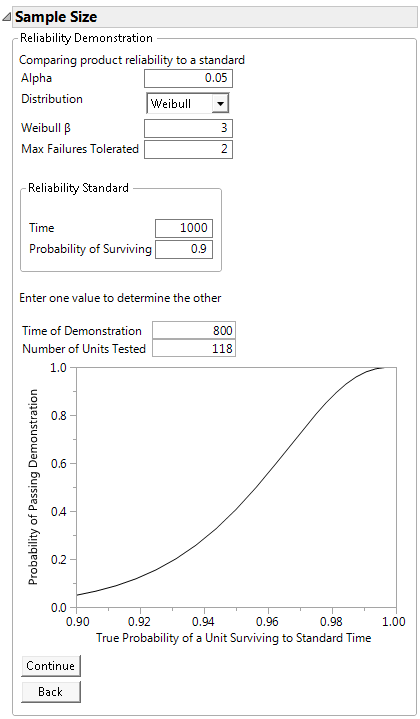Example of the Reliability Demonstration Calculator
A company wants to estimate the sample size needed for assessing the reliability of a new product against a historical reliability standard of 90% survival after 1,000 hours. From prior studies on similar products, it is believed that the failure time distribution is Weibull, with a β parameter of 3. The company can afford to run the demonstration for 800 hours, and wants the experiment to result in no more than 2 failures.
To compute the required sample size:
1. Select DOE > Design Diagnostics > Sample Size and Power.
2. Click Reliability Demonstration.
3. Leave Alpha set at 0.05.
4. Select Weibull from the Distribution list.
5. Enter 3 for the Weibull β.
6. Enter 2 for Max Failures Tolerated.
7. Enter 1000 for Time.
8. Enter 0.9 for Probability of Surviving.
9. Enter 800 for Time of Demonstration.
10. Leave Number of Units Tested blank.
11. Click Continue.
Figure 17.18 Reliability Demonstration Calculator
The company needs to run 118 units in the demonstration. Furthermore, if they observe 2 or fewer failures by 800 hours, they can conclude that the new product reliability is at least as reliable as the standard.
The plot shows that as the true probability of a unit surviving to the time in the reliability standard increases, the probability of passing the demonstration increases. In this example, if a unit has only a 92% chance of surviving to the standard time, then the chance of the new product passing the demonstration is only about 12.5%.
